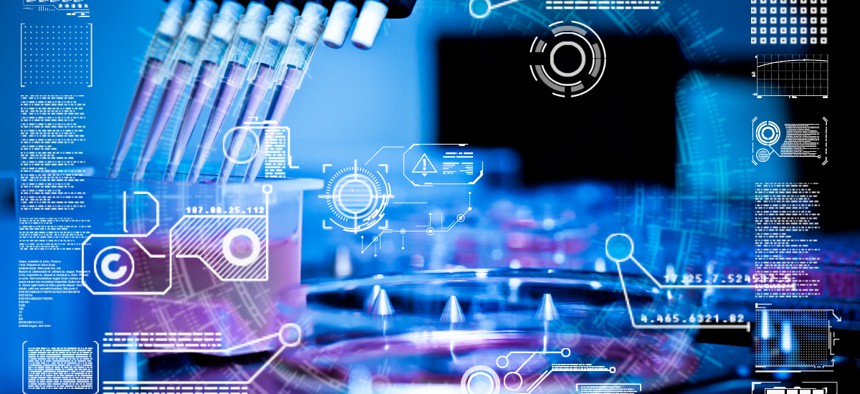Emerging Technologies to Underpin Biden Plan for US Bioeconomy

XH4D/Getty Images
Technologies like artificial intelligence, machine learning and quantum sensing play a key role in the federal plan for a stronger U.S. biomanufacturing sector.
Alternatives to petroleum-based manufacturing for everyday goods stand to become a larger part of the U.S. economy, with the Biden-Harris administration releasing a new series of goals related to propelling innovation in biotechnology nationwide to support a greener economy.
Following an executive order from September 2022, a new national strategy released by the White House on Wednesday calls for a stronger domestic biomanufacturing sector within the U.S. The key principle underlying the national plan calls for swapping out petroleum-made products with sustainable biomass, changing the foundational material that comprises daily necessities.
“The world is on the cusp of an industrial revolution fueled by biotechnology and biomanufacturing,” the report begins. “Through biomanufacturing, sustainable biomass across the United States can be converted into new products and provide an alternative to petroleum-based production for chemicals, medicines, fuels, materials and more.”
Included within the national guidance are several goals to achieve a stronger U.S. bioeconomy with the help of public and private organizations. Four themes will inform those goals: developing more carbon-neutral fuel sources, establishing sustainable chemical and materials supply chains, improving sustainability within the agricultural sector and removing excess carbon dioxide and greenhouse gasses from the atmosphere.
Reaching these goals will require a multidisciplinary approach to grow the U.S. biomanufacturing sector. Workforce development, actionable data and regulations are all components the federal government aims to implement in its R&D efforts.
“Compelling opportunities exist for the U.S. government to build additional databases, develop standards, increase R&D funding opportunities and expand user facilities for scale-up,” the report said. “Investments in workforce development and direct incentives, as well as private industry participation and feedback, are critical to the success of the goals outlined in this report.”
Several public agencies have roles to help further the U.S. bioeconomy, including the National Science Foundation, Department of Health and Human Services and Department of Agriculture.
The Department of Commerce, in particular, is slated to helm the data infrastructure that will support national biomanufacturing goals. This data will be sourced from genomics and multiomics analysis, with artificial intelligence systems expected to expedite the data processes that will fuel further biomanufacturing and biotechnology innovation.
“An open data infrastructure would enable R&D data to be aggregated and analyzed to drive innovation,” the report says. AI and machine learning systems will also be present in future biotherapy development. Overseen by HHS, AI and ML-powered analytics are anticipated to help design disease therapies and treatments at a faster pace through quick analyses of large volumes of data.
“Artificial intelligence may provide the potential of enabling more distributed manufacturing of therapeutics by optimizing distributed manufacturing and linking physically separated laboratories to act in a cohesive fashion,” the report notes.
Quantum information technology is another emerging field that is set to be incorporated in the new U.S. bioeconomy. The report specifically identifies quantum sensing devices that can help detect small amounts of biologics in various biotherapeutic samples for precise diagnoses, further adding to the robust data ecosystem intended to support the new bioeconomy.
The Department of Defense will focus on facilitating the implementation of new biomanufacturing processes, with the support of other agencies. Outlined in its own guidance report dated Tuesday March 21, Defense plans to help establish early transition partners for novel inventions and test their applications as potential solutions to ongoing national security challenges.



